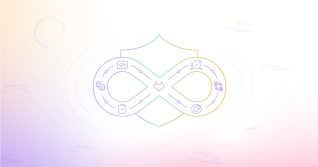Developers love their tools. Operations teams love their tools. And security teams love their tools. As Dev, Sec, and Ops consolidate onto a single DevOps platform, toolchain technical debt becomes exponentially more costly and complex.
“Tools should be in the background enabling excellent development, operations, and security practices. However, DevOps teams are often led by their tools rather than the other way around and that can hinder all aspects of the software development lifecycle (SDLC),” says Cindy Blake, CISSP, director of product and solutions marketing at GitLab.
An April 2022 Gartner® report titled “Beware the DevOps Toolchain Debt Collector” notes that “many organizations find themselves with outdated, poorly governed, and unmanageable toolchains as they scale DevOps initiatives.”
One of the key findings, according to Gartner, is that “most organizations create homegrown toolchains, often leveraging the tools beyond their functional design. This not only leads to a fragmented toolchain, but also creates complications when tooling needs to be scaled, replaced, or updated.”
Toolchain technical debt introduces complexity as companies shift critical tasks such as reliability, governance, and compliance left in the SDLC.
Discover how GitLab 15 can help your team deliver secure software, while maintaining compliance and automating manual processes.
Save the date for our GitLab 15 launch event on June 23rd!
No time for technical debt
Few DevOps teams give toolchain upkeep the time and attention it requires. According to GitLab’s 2021 DevSecOps
survey, nearly two-thirds of survey respondents, 61%, said they spend 20% or less of their time on toolchain integration and maintenance each month.
“Developers face challenges and time constraints while maintaining these complex, stand-alone tool siloes, building fragility and technical debt that the [infrastructure and operations] leader has to deal with,” Gartner states. The research firm adds, “These outdated toolchains further increase overhead costs, magnify technical risks, add operational toil, and limit business agility.”
Blake agrees: “Complex toolchains inhibit the ability to govern the software development and deployment process. Policies must be managed across tools and visibility into code changes and changes to its surrounding infrastructure become difficult to see and track. Time is wasted on managing the toolchain instead of value-added work.”
Getting purpose-driven
The remedy to toolchain sprawl and subsequent debt is to change strategy. Instead of putting energy into figuring out how to maintain one-off tools, DevOps teams should focus on how to enable processes and policies that support simplicity, control, and visibility across the SDLC.
“These are the characteristics needed to meet reliability, governance, and compliance demands. A united platform like GitLab helps you do that,” Blake says.
Gartner states: “Successful infrastructure and operations leaders reduce technical debt and sustainably scale DevOps toolchain initiatives across the organization by using a prioritized, iterative strategy that minimizes friction in making changes to toolchains and more quickly delivers customer value.”
Adopting a purpose-built platform instead of a complex and ad-hoc toolchain also eases an organization’s ability to automate the SDLC. “Automation abstracts complexity away from the developer and provides guard rails so DevOps teams gain greater efficiency, accuracy, and consistency,” Blake says. In addition, automation reduces the audit footprint in terms of what needs oversight and inspection.
Platforms also support automation throughout operations, including building and
testing infrastructure as code, so that “you can eliminate the variables when you’re trying to debug an application,” she says. This speeds troubleshooting response times and reduces application downtime.
For instance, GitLab, the One DevOps Platform, features dependency
lists, also known as software bill of materials (SBOM), that show which dependencies were used and help to identify where problems exist. “GitLab also helps you avoid problems altogether by consistently scanning dependencies according to policies and compliance standards that the platform provides,” Blake says. DevOps teams can easily see what changes were made when and by whom. “That visibility is critical when trying to resolve issues and prevent them from happening again,” she says.
Reclaim your DevOps team’s time
By adopting a single DevOps platform, organizations can reclaim developer, security, and operations time that has been spent stitching tools together or optimizing for one developer’s tool, and then backtracking through toolchains when an application breaks because those tools can’t co-exist.
“DevOps teams have a lot on their plates and trying to manage unruly toolchains is simply a waste of time. You should be creating state-of-the-art software, not manually integrating and maintaining legacy tools,” Blake says.
She emphasizes that GitLab is not “rip and replace”; it’s a platform where everything needed for DevOps comes together in one place. IT leadership benefits from this united approach as well. Value stream
analytics provide insight into your end-to-end software throughput, helping optimize IT resources most efficiently and enabling a flexible, responsive business outcome. “We meet DevOps teams where they are and put the user – whether they be a developer, operations, or security professional – in the center of the platform,” she says.
Try GitLab Ultimate for free for 30 days.
GARTNER is a registered trademark and service mark of Gartner, Inc. and/or its affiliates in the U.S. and internationally and is used herein with permission. All rights reserved.



